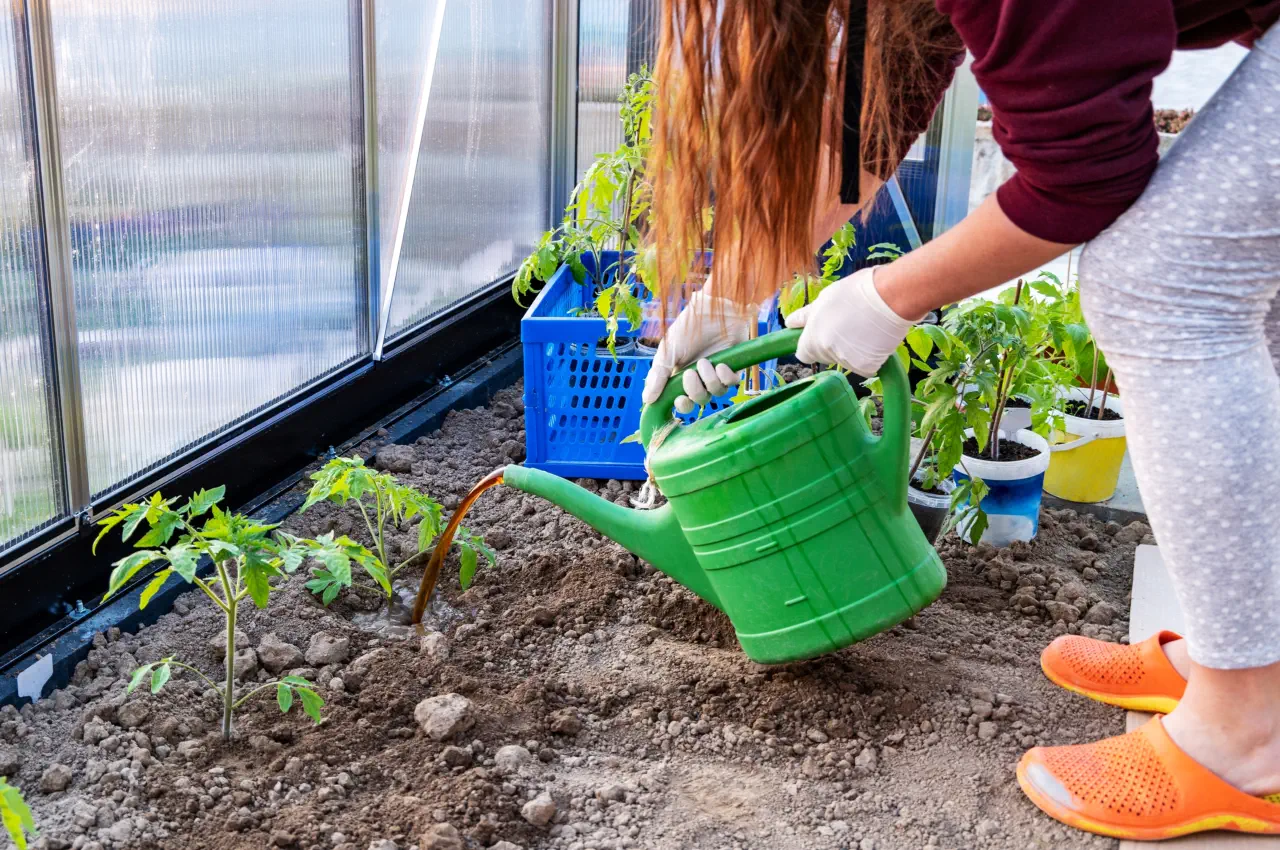Pak Choi is grown for its tasty leaves which are superb when added to stir fries and salads.
The taste is similar to that of mild cabbage and spinach and is a popular addition to many oriental dishes.

A tomato plant has one fully focussed mission in life, which is to produce as many tomatoes as possible before it dies. It therefore needs to grow fast, create more foliage, strengthen its supporting stems, produce trusses and flowers, and ultimately fruits. The fruits then need to swell, ripen and mature. All this activity requires energy plus an abundance of light, warmth and water. Some of the plant’s energy needs are met through photosynthesis, where the leaves convert sunlight into glucose (sugar) with the aid of CO2 and water but this alone is not enough.
The plant needs a variety of nutrients, which it absorbs from the soil but very often demand outstrips the availability of essential nutrients, especially when the volume of soil is limited. For example, a pot or other soil container can only provide a limited amount of nutrients and will therefore become exhausted very quickly. This will result in stunted plant growth and smaller fruits. Plants that are struggling to support themselves with vital nutrients and other trace elements are more likely to suffer from disease and a poor growth rate, so feeding is essential.
There are several types of plant food suitable for tomatoes including a general liquid feed, granular feed, slow release fertiliser, blood and bonemeal, seaweed and good old fashioned compost or well-rotted manure. However, because tomatoes need specific amounts of the 3 essential elements, Nitrogen, Phosphorus and Potassium (NPK), some proprietary brands of tomato feed have been developed just for this purpose. Tomorite is one example, which is well-known amongst gardeners and there are several others on the market.
The main thing to remember about feeding tomatoes is that they need a high level of potassium in order to produce high quality fruits. However, this is not a requirement until the first fruits actually begin to set. Prior to this, they will get by with a general fertiliser such as Growmore or a general slow release fertiliser such as Vitax Q4 or Osmocote. Young plants need to develop a strong root system and healthy leaves but not too much foliage, at the expense of flowers and fruits. Growmore is a little too high in Nitrogen, so Vitax Q4 or Osmocote are the better options.
Vitax Q4 also contains several trace elements such as Zinc and Magnesium, which some other slow release fertilsers may not contain. Other slow release fertilisers include blood and bonemeal, which takes quite a while to break down. As it does it releases its store of Phosphorous and Nitrogen, Calcium, Magnesium, Iron, Zinc and other trace elements. Sulphate of potash is another slow release fertiliser, which is high in Potassium. Most of the granular slow release fertilsers are referred to as ‘controlled release’ because they break down slowly over time, some will take up to 6 months to fully breakdown.
The big advantage with liquid feeds is they provide an almost instant hit. Liquid feeds are applied with water so the plant’s roots are able to absorb the feed very quickly. There are a large number of liquid feeds on the market from all the best known brands. Whether you choose a liquid feed or a slow release granular feed is a matter of personal choice and preference, as generally, the end results will be the same. It may well come down to price as liquid fertilisers tends to be more expensive than granular fertilsers.
If you want to reduce costs or just don’t like the idea of using manufactured chemicals on your tomatoes then there are other options. Well-rotted farm yard manure or compost will usually contain amounts of NPK and some trace elements but you take a chance because you will not know the exact quantity levels unless you have the compost analysed. However, this option has some merit if used as a base fertiliser and mixed with the potting compost. You can always add a liquid or granular feed top-up later if it’s required.
So, the question of when to feed tomatoes will depend on the option you choose. If you decide to use a slow release granular feed then simply add this to the final potting compost and your tomato plant’s needs will be adequately catered for during all of the growing season. If you prefer to use a liquid feed then add a little base fertiliser at the final potting stage or when planting out and then begin applying a liquid feed once the flowers develop and then once a week thereafter. Remember that a high potassium, or potash based feed, is best for encouraging flowers and fruits.
What do you feed your tomato plants with? Leave a comment below and let everyone know....
All blog content on this page is copyright of SimplySeed and is not to be reproduced without prior written permission. ©